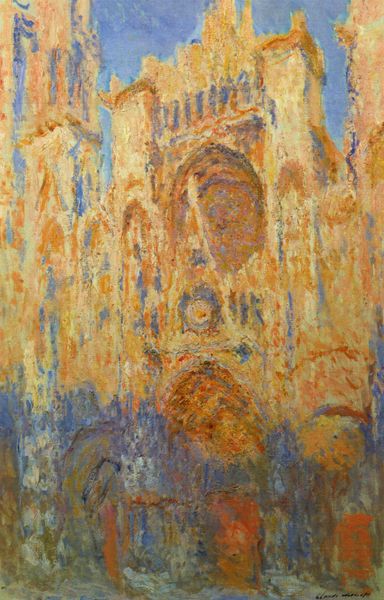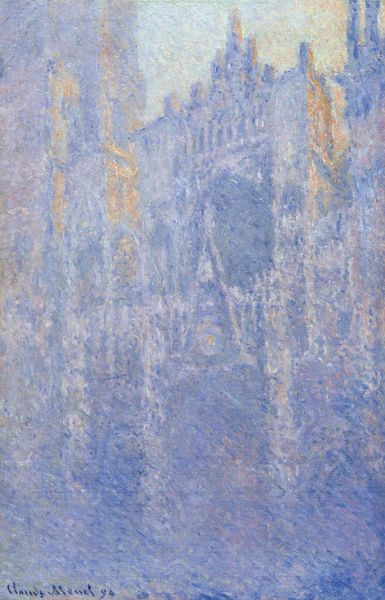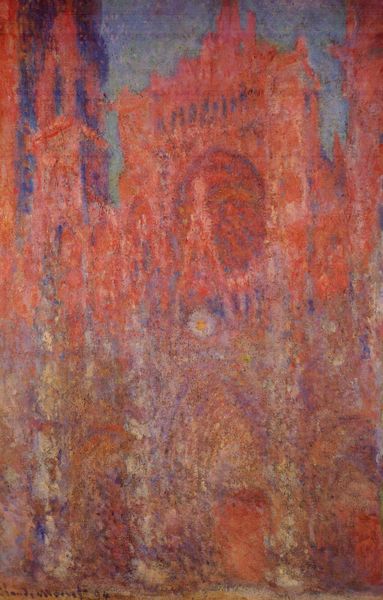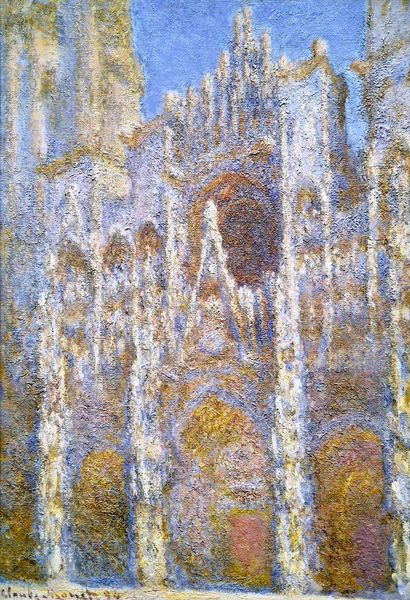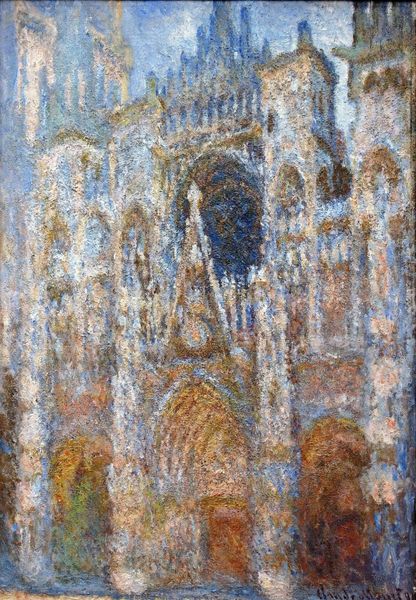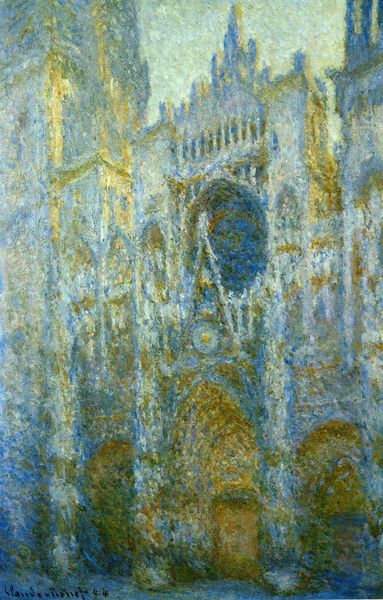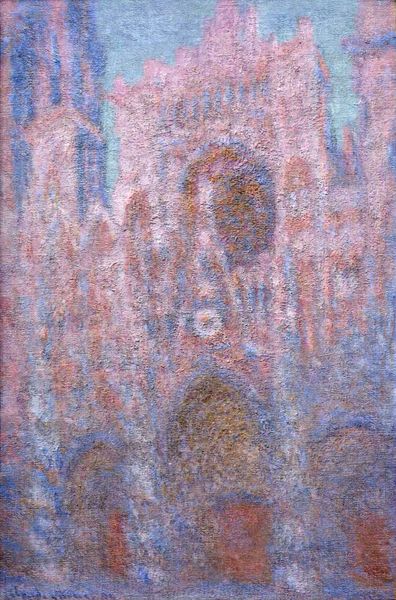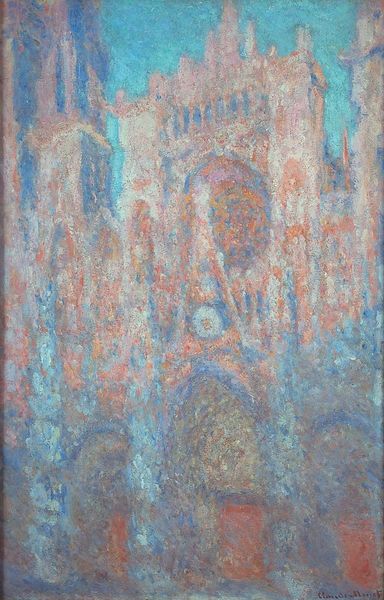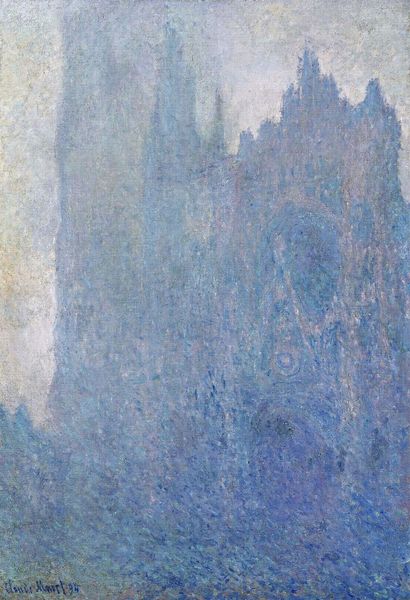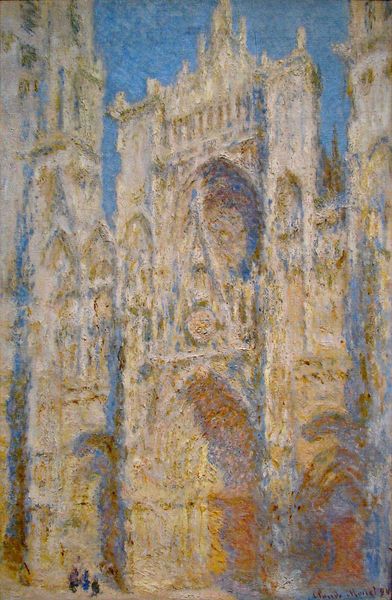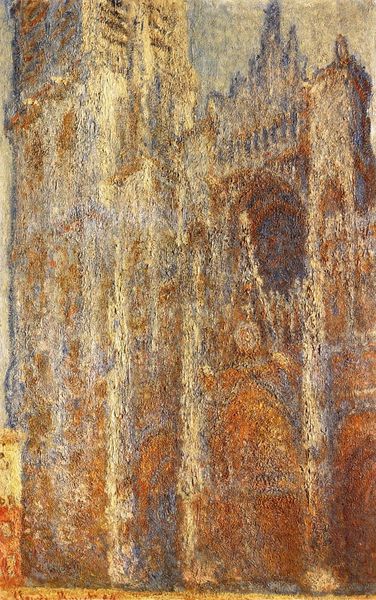
Rouen Cathedral, The Portal at Midday 1893
0:00
0:00
claudemonet
Clark Art Institute, Williamstown, MA, US
Copyright: Public domain
Curator: This is Claude Monet’s "Rouen Cathedral, The Portal at Midday," painted in 1893. It’s one of a series he made of the cathedral at different times of day and under varying weather conditions, using oil paints in the open air, or en plein-air as it's termed. Editor: The effect is…shimmering. The architecture dissolves into pure light and color. I see soft blues and golds melding into each other. It almost vibrates with sunlight. Curator: Absolutely. What makes this series compelling is how Monet turns a symbol of institutional power, the church, into a canvas for studying transient light. It reflects the rise of secularism and a shift in focus from religious doctrine to subjective perception. What was so avant-garde was the dissolution of concrete objects; it moved us from a reliance on historical accuracy and towards fleeting impressions. Editor: Yes, this cathedral becomes almost dematerialized, filtered through Monet's interpretation of sunlight. It’s impossible to ignore that this choice also aligns with the politics of Impressionism as an artistic movement itself, challenging the authority of the traditionally academic. Was this approach welcomed at the time, or considered controversial? Curator: Critiques certainly surfaced with claims that this work lacked substance, emphasizing aesthetics at the expense of traditional themes of religion. However, there was praise regarding its radical new representation that showed shifts of both environmental and societal transformations occurring across Europe. These techniques, and his focus on perception, influenced generations of artists moving towards abstraction. We need to consider who has historically held positions of power within the art world in terms of shaping dominant aesthetics. Editor: So even this seemingly straightforward landscape can prompt us to question broader cultural narratives and the politics embedded in artistic expression. Seeing through these perspectives reveals new interpretations beyond the immediate, observable image, expanding discussions about impressionism, representation, and power. Thank you. Curator: Thank you for sharing. Looking closer always challenges our presumptions of how art serves to function both historically and presently.
Comments
No comments
Be the first to comment and join the conversation on the ultimate creative platform.
